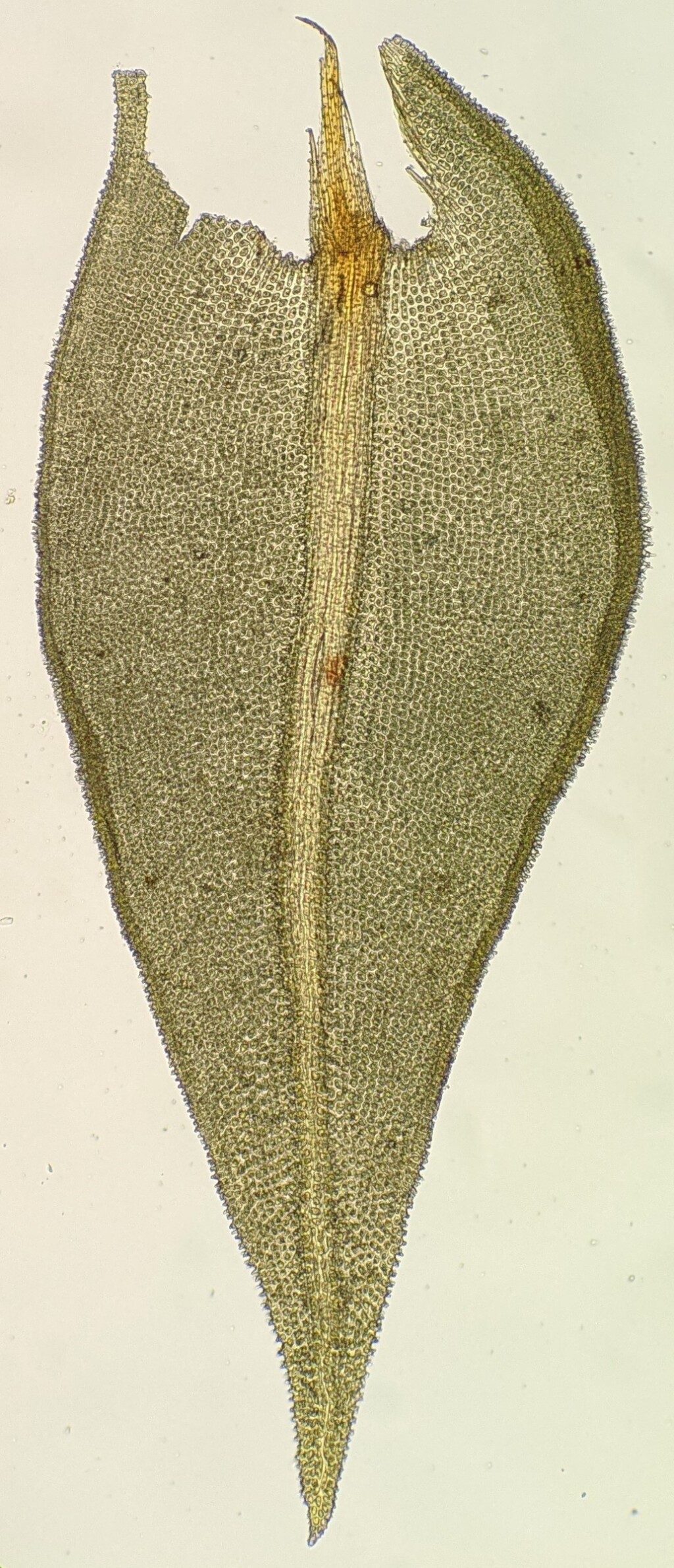Triquetrella papillata
(Hook.f. & Wilson) Broth.Loose mats on rocks and soil. Stems 20–40 mm long, filiform, rigid, brittle when dry. Leaves borne in three rows, widely spreading to squarrose when moist, erect and closely appressed when dry, broadly ovate-lanceolate or ovate-cordate from a long-decurrent base, 1–2 mm long, carinate; apex acute or acuminate; costa failing below apex or percurrent; margin entire, somewhat revolute in basal half; laminal cells hexagonal, isodiametric throughout, 10–14 μm wide, smaller toward margins, papillose; papillae tall and spinous or branched and clubbed, one or rarely two per cell. Seta 10–12.5 mm long, yellow. Capsule erect, narrowly cylindric, straight, 1.5–2 mm long. Operculum with a short and blunt curved beak, c. 0.4–0.7 mm long. Persitome teeth 16.
LoM, MuM, Wim, GleP, VVP, VRiv, RobP, MuF, GipP, OtP, WaP, Gold, CVU, GGr, DunT, NIS, EGL, EGU, WPro, HSF, HNF, OtR, VAlp. Possibly the most ubiquitous moss species in Victoria on bare dry soils or exposed rocky areas and occurring in a variety of vegetation types including mallee, woodland, sclerophyll forest, heathland and coastal vegetation, occasionally also beside waterways, but mostly absent from higher rainfall and altitude areas. Also WA, SA, QLD, NSW, ACT and Tas. New Zealand.
 Spinning
Spinning
